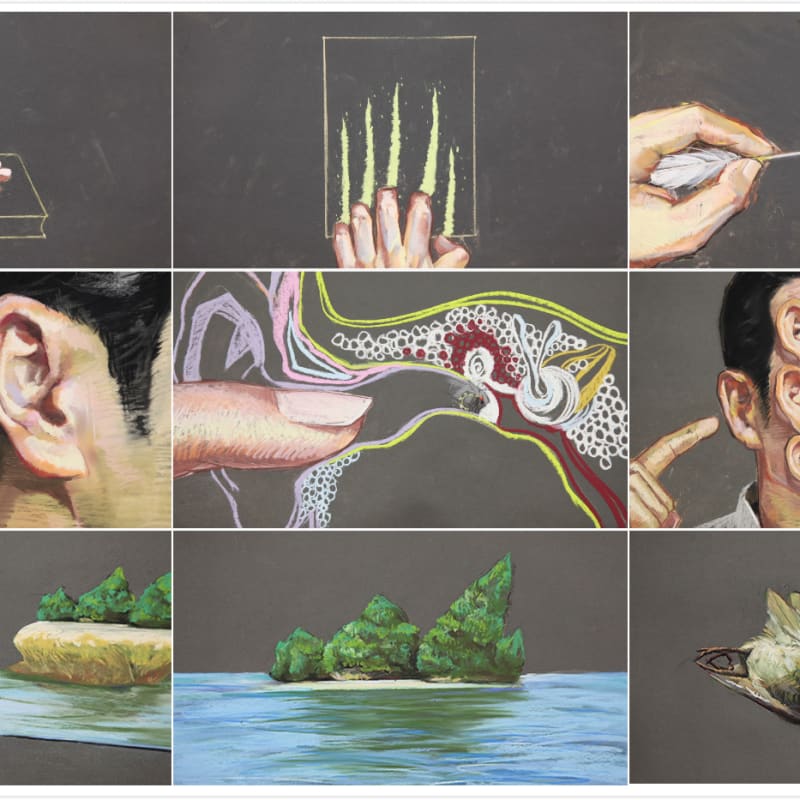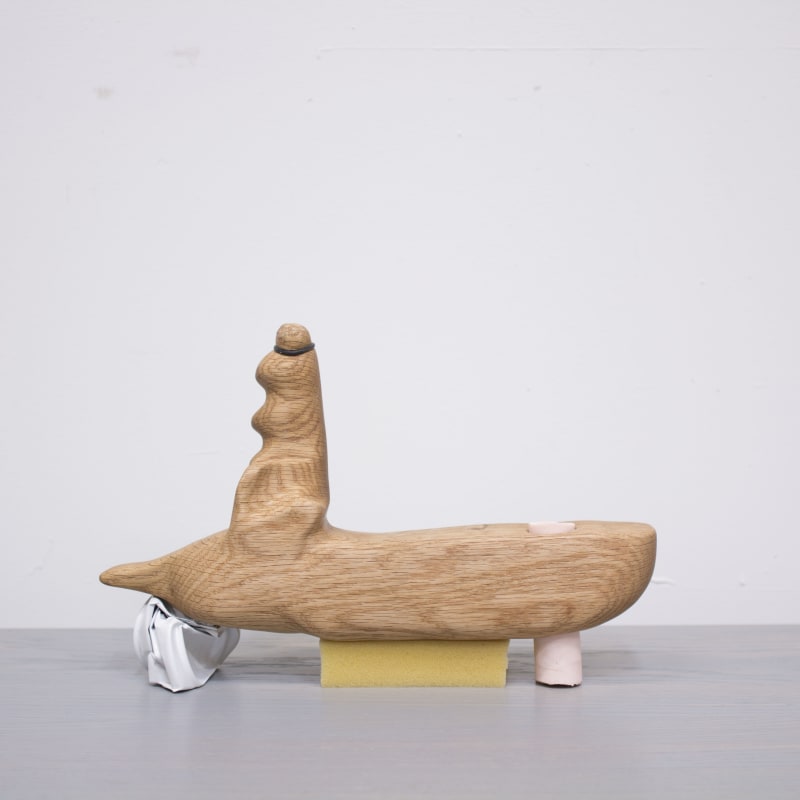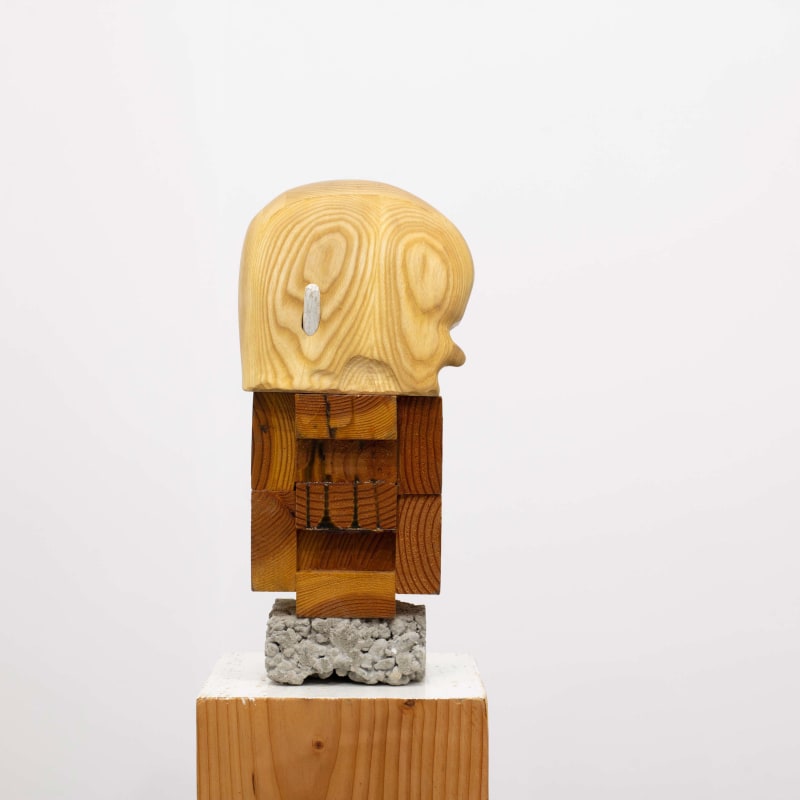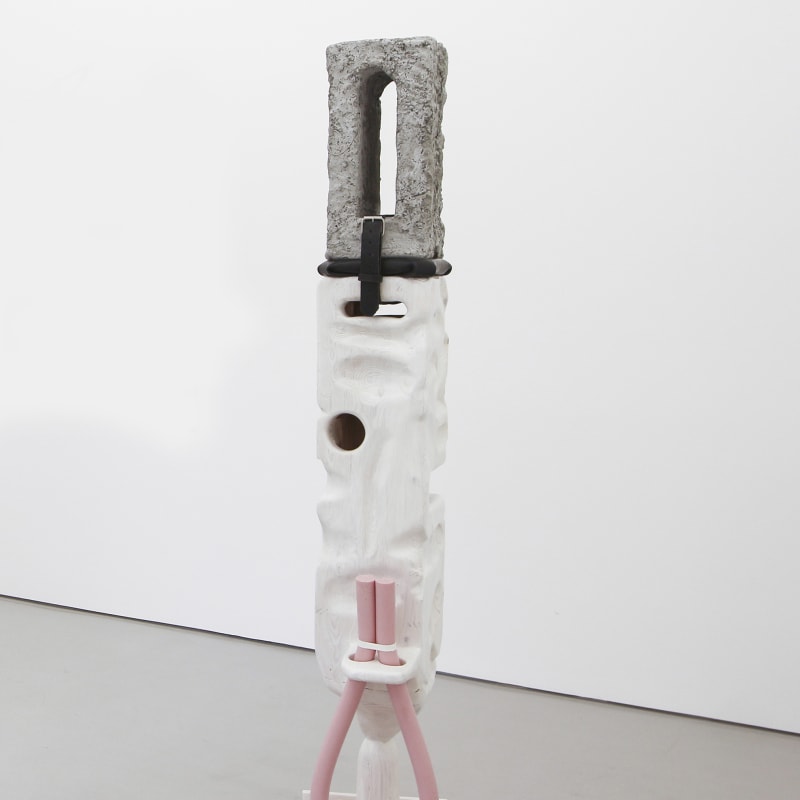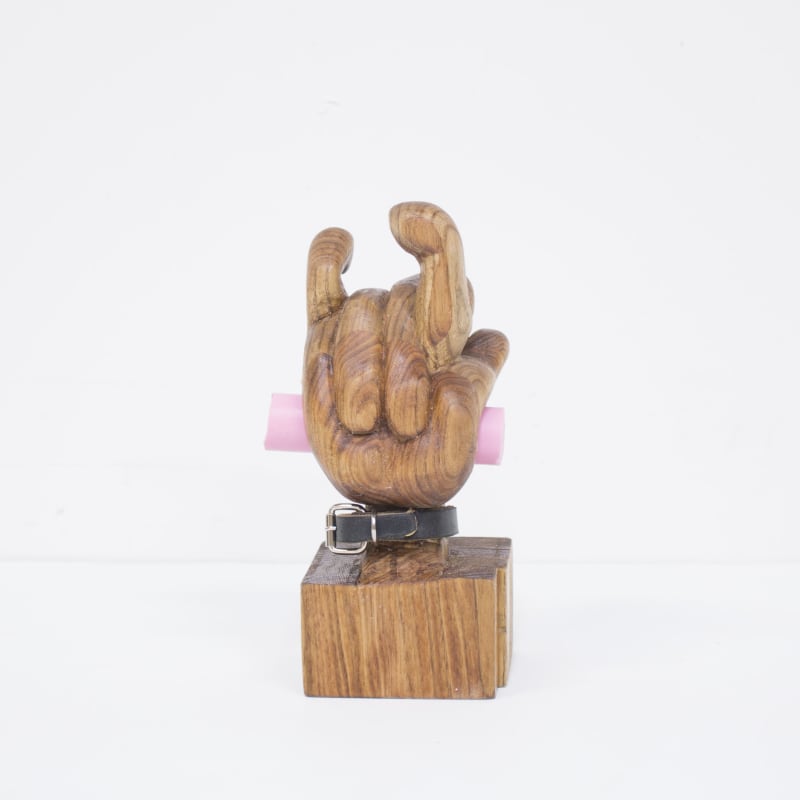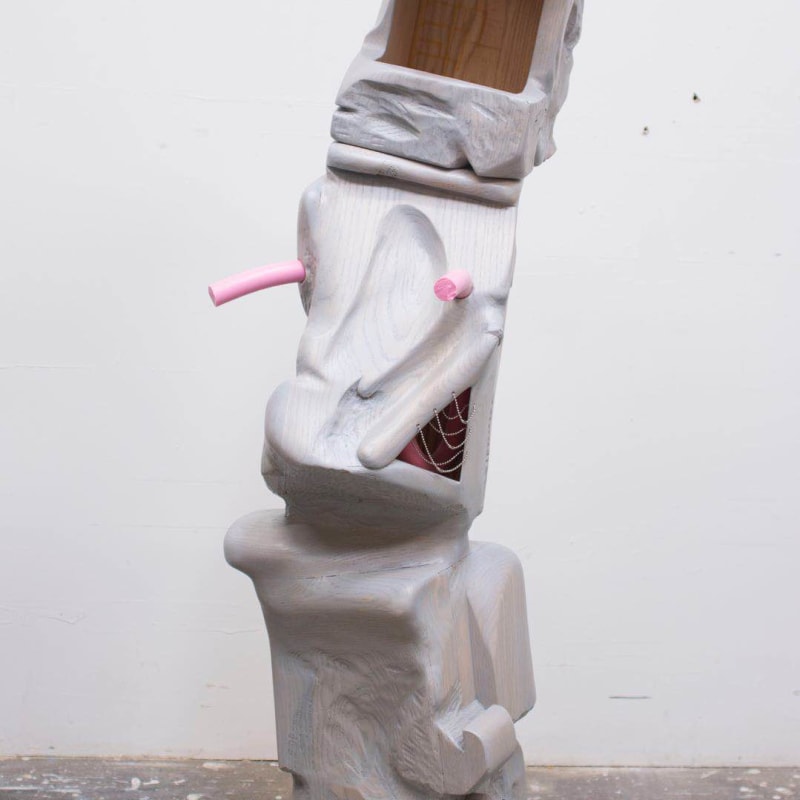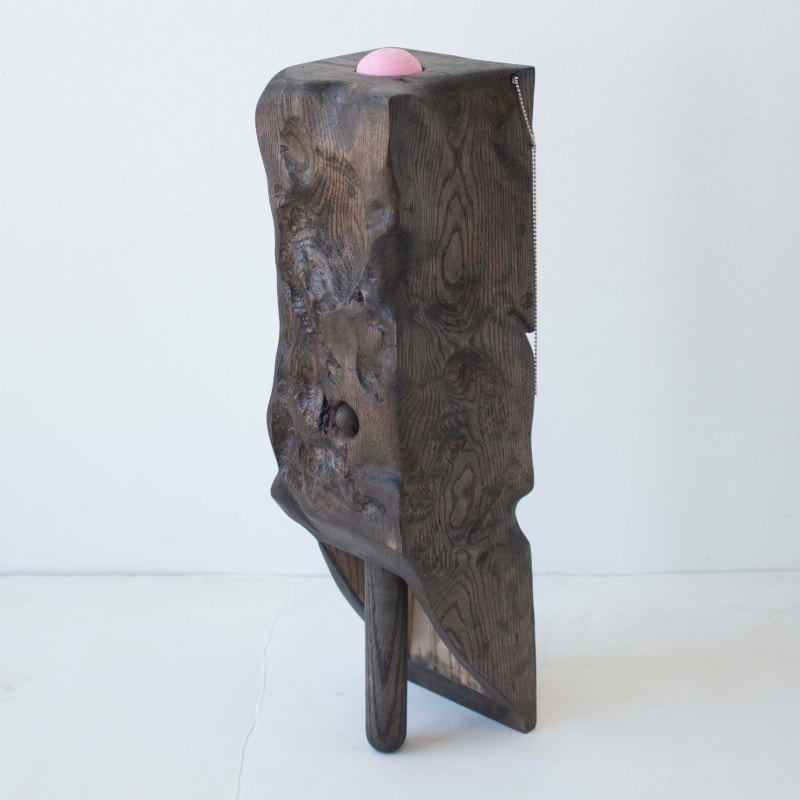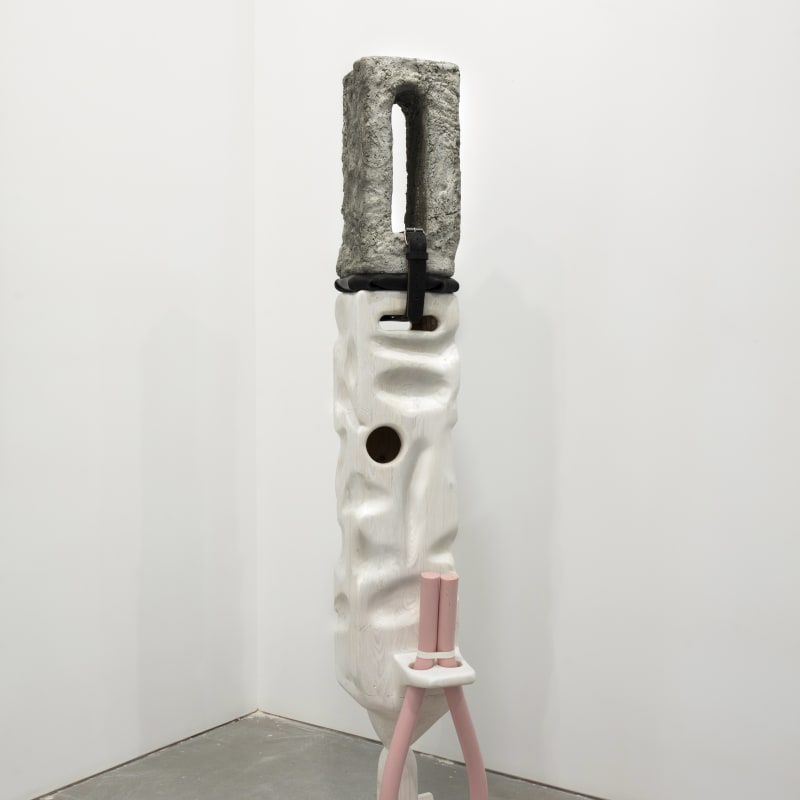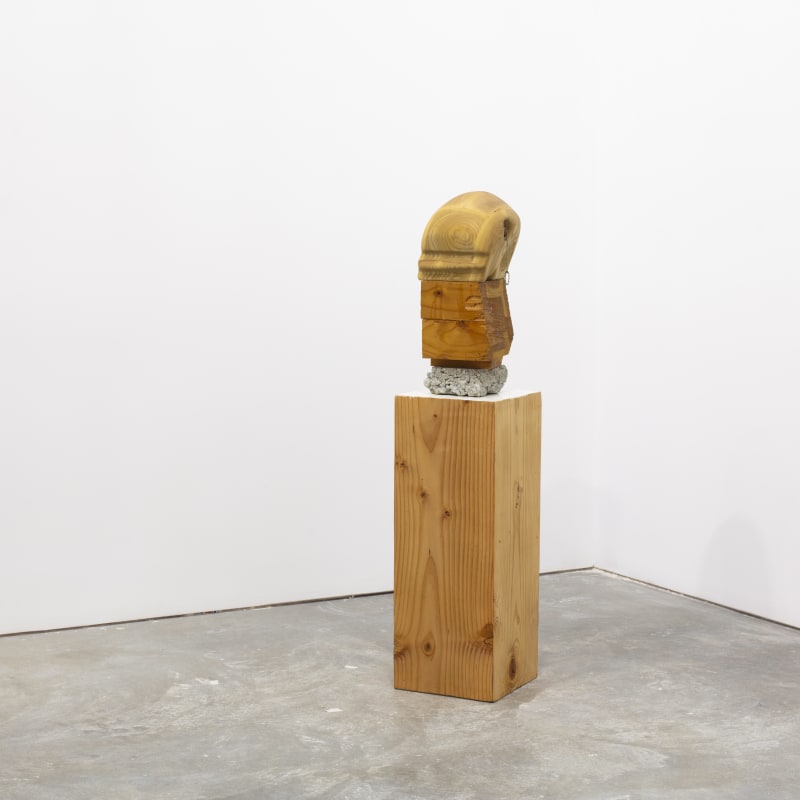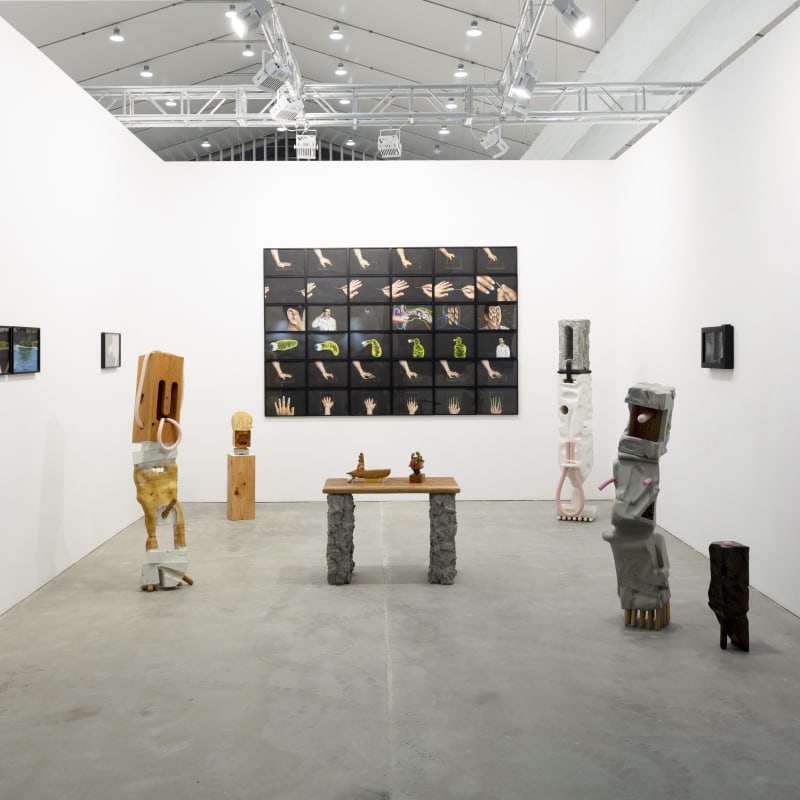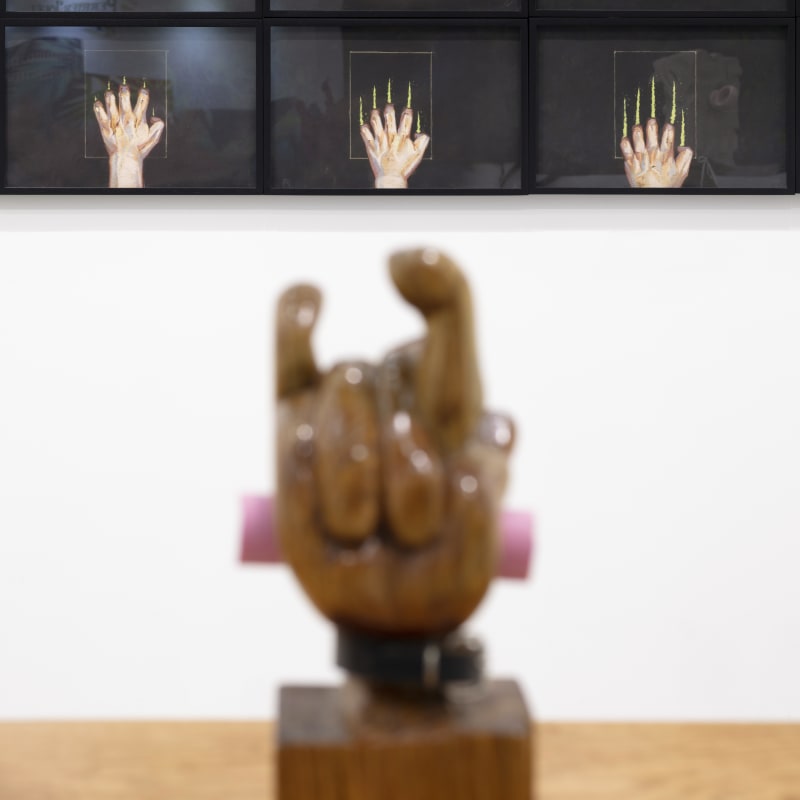For the 2018 edition of West Bund Art & Design, Capsule Shanghai is pleased to present "Cyborg Dates" - a corporeal coupling of works from American artist Douglas Rieger, here at his debut in China, and Chinese artist Wang Haiyang.
The exhibition, co-curated by artist Sarah Faux, features a group of Rieger's anthropomorphic sculptures and a selection of Wang's pastel works paired with their latest animated version.
As humans use technology to animate the inanimate, they lose parts of their humanity to machines. The cyborg, half-human and half-machine, embodies the union of the familiar and the extraordinary. Both artists offer contemporary takes on the notion that machines are inherently part of our nature, our psyche and the way we operate. The artificially animated cyborg is therefore not merely a creation, but a creator in its own right.
Through his sculptures, Rieger hints at the "human" nature of objects, a quality conveyed in the way they move, twist, extend and ultimately perish. Rieger constructs a visual narrative that places the sculpture as an anthropomorphic entity, psychologically filled with its operator's aspirations, desires and inner dialogue (Part Indefinitely, 2018). In order to invoke both seductiveness and repulsion, Rieger balances the materials in a restless play between natural and artificial, polished and raw. He then carefully choreographs the space between every piece in a way that suggests a gravitational attraction and semiotic rhymes between them. Wang's pastel works on paper capture the mechanical essence of human movement that is revealed when individual gestures are decontextualized and distilled into one frame. His otherworldly scenarios, almost verging on the abstract, unveil truths around the human experience and transplant a surrealist sensibility into a contemporary context. Animated on the new short video entitled The Birth of the Word, to the Demise of the Bird (2014-2018), these works on paper construct a storyline that, just when the viewer thinks of watching a clear statement of cause and effect, suddenly becomes very shifty. Creating rifts between expectations and reality, this eclectic collection of different mediums is tied together by whimsical imagination, Freudian slips and dreamlike language.
Read below the interview between Sarah Faux, Douglas Rieger and Wang Haiyang.
Sarah Faux (SF): Douglas and Haiyang, I'm so excited to bring your work together for the West Bund Art Fair. This particular arrangement of animation, drawing and sculpture gained the title "Cyborg Dates". So I'm wondering, how do you feel about cyborgs?
Wang Haiyang (WHY): Its funny, actually I had a kind of 'cyborg' experience two years ago. I had a major surgery, two big heavy frames were installed on my legs, and each one had six nails in my bones. At that moment, the computer data slowly changed my body, and I was always questioning: is my body really my body? Sometimes I felt the heavy metal frames on my legs were becoming a part of my 'real body'. I couldn't tell the difference, they were growing on me! So when I talked to my artworks, it was just like I was talking to those two metal frames. The same feeling, the same relationship.
SF: Wow, so you developed a kind of empathy or closeness with a material like metal. What about you Douglas? Where are the boundaries of the human body within your work?
Douglas Rieger (DR): I think that humans want to put their mark on the objects in world they live in; a teenager writing their favorite bands in marker on their shoes, a young man customizing his moped, or even some one sitting on a bench and carving their name into it. Modifying the things around us allows us to inhabit them, and I think that that same presence of inhabitation exists when they are made by hand, but is less powerful when they are produced by machines... this desire to inhabit forms is running parallel to sexual desire. I love it when the paths cross and manipulating quotidian objects becomes a sexual act, it is very bizarre. Having forms be multiple things at once, a handle, an arm, an ear, a vessel, a hook, a penis, that can really illicit a feeling of inhabiting an object.
SF: So true. Both of you are mentioning acts of inhabiting: metal inhabiting your body Haiyang, or Douglas, desire compelling you to inhabit an object. This feels like a very primary impulse, to make materials violate each other...
WHY: This series of work, "The Birth", started about four years ago, but my operation is about two years ago, so the 'metal inhabiting my body' actually just jumped out of my mind when Sarah mentioned about cyborgs.
SF: Now it feels like such a natural connection! But I'm really wondering - in Haiyang's animation a worm becomes an eye becomes a man, or in Douglas's sculpture wood becomes fluid - is there a certain satisfaction in transforming the inanimate into the animate, or maybe even in the literal act of animating?
WHY: My animation is a revolving mechanism, with no beginning or outcome. There's only an obsessive force pushing the plot along, which causes regeneration, substitution, disruption/disintegration, construction, circulation and chain reactions to occur between different objects. I take advantage of the language of animation to excavate and erect hidden relations between various objects, while the plot line moves in the direction of nothingness.
SF: That sounds like a hidden nihilism, or maybe just an acceptance of an infinite cycle of change. What about you Douglas? Even in these heavy still objects you manage to make your materials feel like they are constantly in flux. Where does that impulse come from?
DR: As a kid I was always embarrassed by my body and others bodies. It wasn't until much later when this discomfort allowed me to see transformations happening in the objects around me. Everything became something else and transformed into a bodily presence with a personality. I think those transformations, frozen in my sculptures, but active in Haiyang's animations, distort the image of the body in a way that the viewer reacts with awe and repulsion reflecting on how incredibly odd it is to inhabit a body that was built to engage
with the world in one way but now is adapting to new translations of that world in perpetuity.
SF: Are you acting out a kind of fetishization of the object? Or a ritual transformation?
DR: I am fetishizing objects, but I like to think of every object as having an ability to get to that illustrated type of fetish vibe. The base level sexiness of objects is fun to play with, but I think adding moments of uncertainty within that sexiness adds much more to the work. Is that a handle? A spout? a hose?
SF: Yes, that inability to name what you're seeing definitely throws me into a playful erotic headspace when I look at your work Douglas. Haiyang, I'm struck by how equally playful your animation is when I know the process to create it is quite tedious.
WHY: You know it is really boring to draw those 'stills', it is a process of copying again and again. I do not think of this as a drawing process, but more like acting, you need to spend a long time to create an image that flips on the screen for just a second (for example the worm becoming a man). Usually animators do this as a job. There is a huge difference though between my works and the work of animators. Animators usually have story first and then they make stills to finish the story. I start by making the stills, and the story develops later.
SF: Ah hah, that makes sense. There's a feeling in "The Birth" of a freely moving train of thought. This churning, never fully settling, motion might be what I admire most in both of your art. Thank you both or sharing your thoughts and your work.
